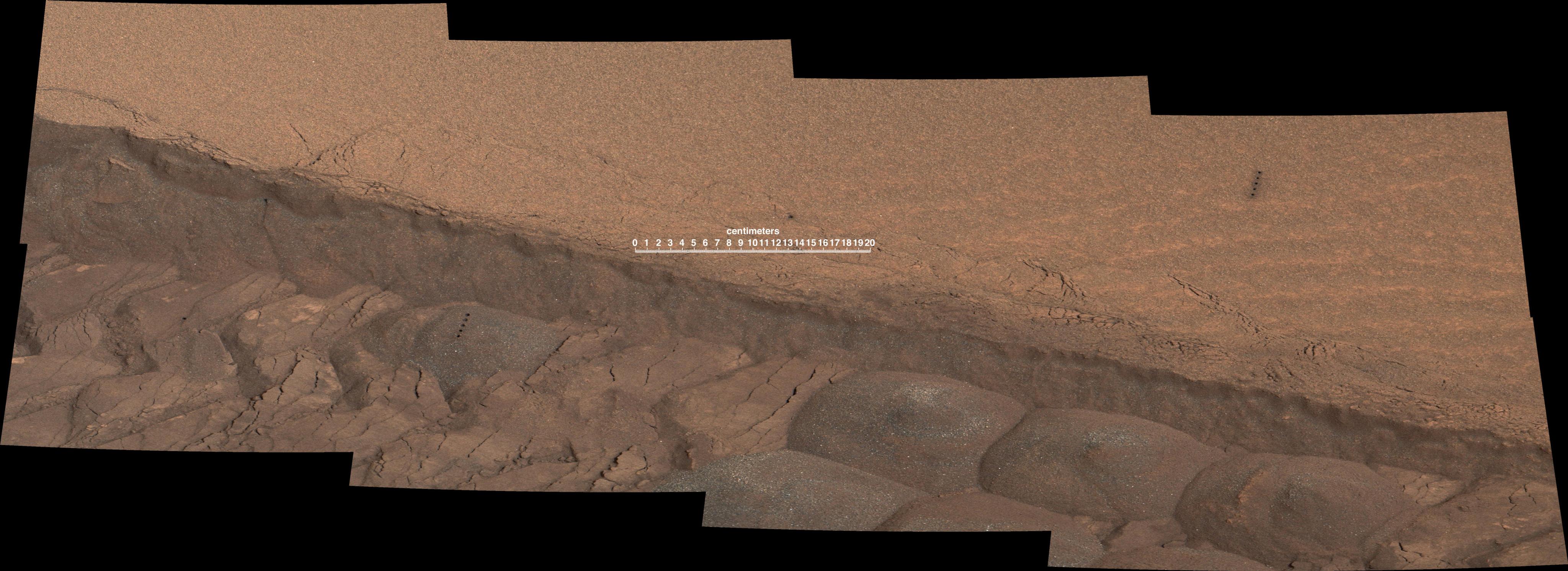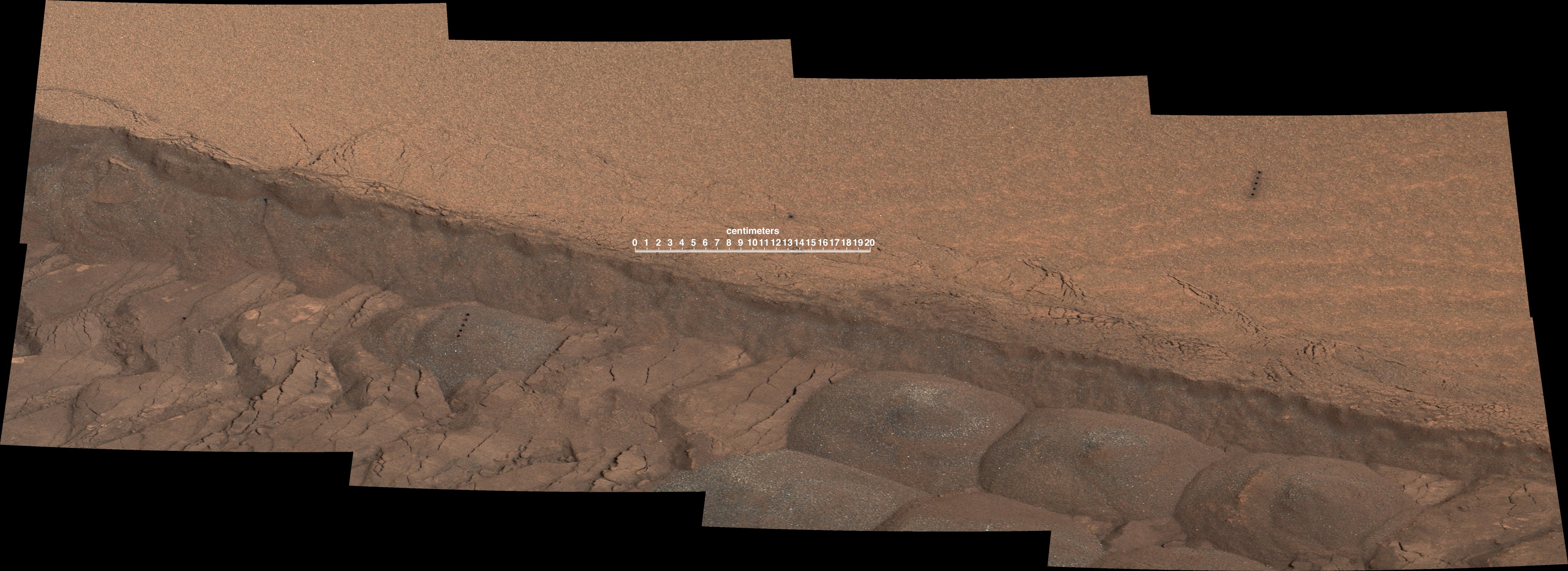Ripple’s Interior Exposed by Rover Wheel Track (Labeled)

| Credit | NASA/JPL-Caltech/MSSS |
|---|---|
| Language |
|
A wheel track cuts through a windblown ripple of dusty sand in this image from the Mast Camera (Mastcam) on NASA's Curiosity Mars rover. The view spans about four feet (1.2 meters) from left to right.
The rover team planned this experiment to get a view of the inside of the ripple for assessment of particle sizes, distribution and composition. The site is near the lower edge of the "Pahrump Hills" outcrop at the base of Mount Sharp.
The view combines Mastcam exposures taken on Nov. 7, 2014, during the 801st Martian day, or sol, of Curiosity's work on Mars. The color has been approximately white-balanced to resemble how the scene would appear under daytime lighting conditions on Earth.
Figure A is a version with a scale bar overlaid on the image.
One motive for this experiment is to gain a better understanding of loose, wind-carried deposits in the area. Some nearby wind drifts that Curiosity drove into were more difficult to cross than drifts experienced earlier in the mission.
The far wall of the track offers a cross-section view of the ripple. A series of five small holes arranged in a line in the left half of the image are where laser firings by Curiosity's Chemistry and Camera (ChemCam) instrument were used for identifying chemical elements present.
NASA's Jet Propulsion Laboratory, a division of the California Institute of Technology, Pasadena, manages the Mars Science Laboratory Project for NASA's Science Mission Directorate, Washington. JPL designed and built the project's Curiosity rover. Malin Space Science Systems, San Diego, built and operates the rover's Mastcam.

